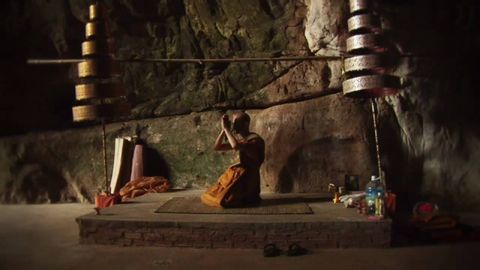
Subtitles & vocabulary
How To Meditate V - Mindful Prostration
00
Hhart Budha posted on 2014/06/14Save
Video vocabulary
technique
US /tɛkˈnik/
・
UK /tekˈni:k/
- Noun (Countable/Uncountable)
- Way of doing by using special knowledge or skill
- The skill or ability to do something well.
A2TOEIC
More meditation
US /ˌmɛdɪˈteʃən/
・
UK /ˌmedɪ'teɪʃn/
- Noun (Countable/Uncountable)
- Act of deep and quiet thinking
- The practice of focusing one's mind for a period of time.
B2
More turn
US /tɚn/
・
UK /tɜ:n/
- Intransitive Verb
- To become (a particular age)
- To become a different quality, color, etc.
- Verb (Transitive/Intransitive)
- To change the direction of something, e.g. a car
- To move in an opposite direction or position
A1
More raise
US /rez/
・
UK /reɪz/
- Transitive Verb
- To increase a bet above another when playing cards
- To gather donations for a cause or charity
- Noun (Countable/Uncountable)
- Increase in a bet above another when playing cards
- Pay increase
A1TOEIC
More Use Energy
Unlock All Vocabulary
Unlock pronunciation, explanations, and filters
